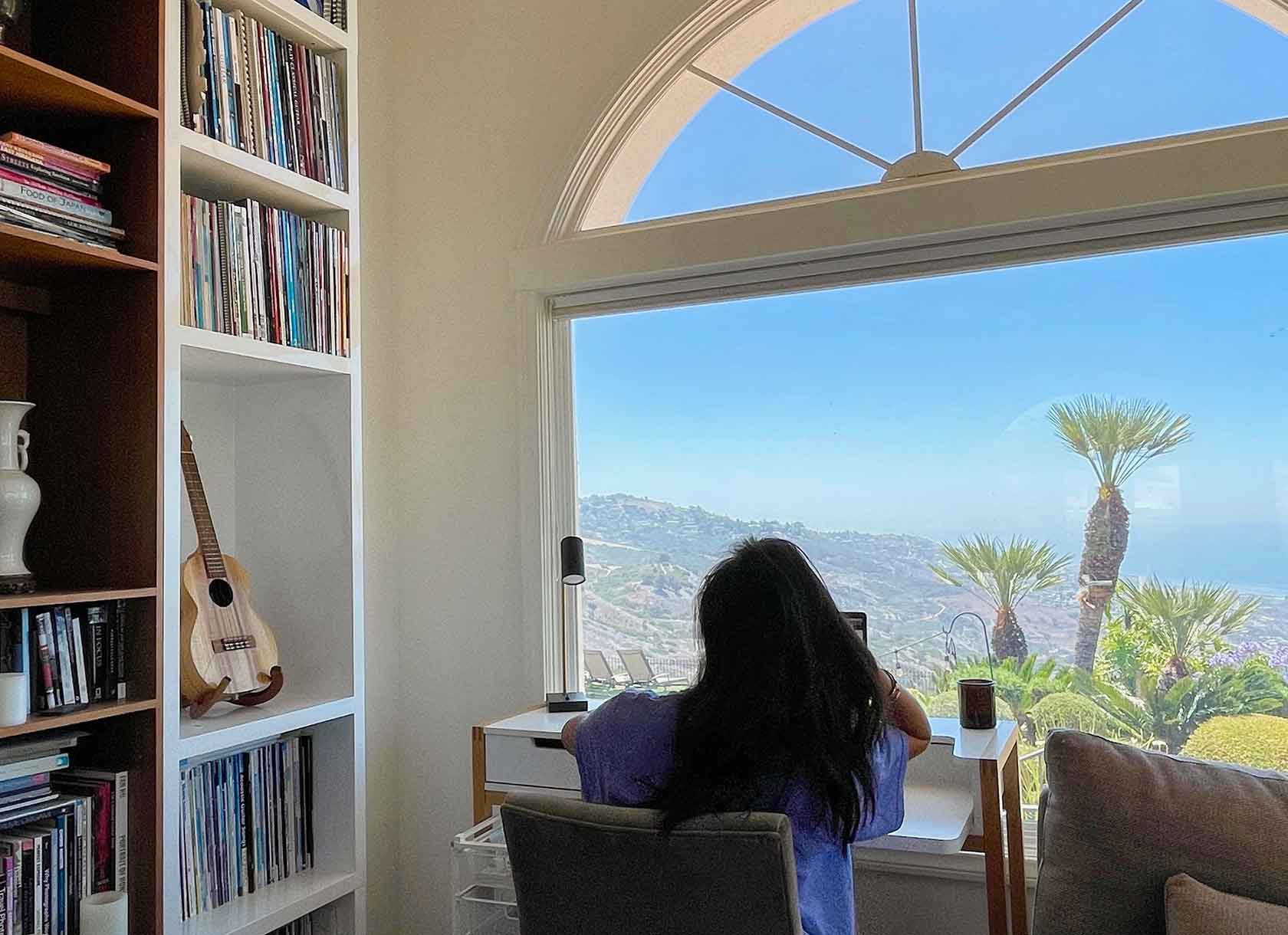By Rachael Warecki ’08

If you’re a TikTok user who follows wellness-related accounts, you may be familiar with the rise of the “that girl” trend. By posting content that focuses on productivity and self-care, accounts that embody the “that girl” lifestyle have encouraged others to find their best selves through morning workouts in color-coordinated Lululemon clothes, journaling in Papier notebooks, and listening to meditation apps on conspicuously displayed iPhones. As a wellness and TikTok aficionado, Katie Eu ’23 is familiar with the aesthetic and its nuances. Now, through her Scripps-funded summer research, she’s moving the “that girl” discussion into an entirely new realm: the field of behavioral economics.
Behavioral economics exists at the intersection of economics, sociology, and psychology. Eu, an economics and sociology double major, dove into the discipline during an introductory course at the London School of Economics (LSE), where she participated in an accelerated summer program.
At LSE, she learned mathematical approaches to mapping out human behavior such as game theory, which predicts individuals’ preferences by developing equations and comparing their numerical payoffs. She then learned her preferred, more theoretical approach to the subject the following semester, during a class on consumer society and culture taught by Pomona College Visiting Professor of Sociology Gary Yeritsian.
By the end of these courses, Eu was able to link her economic understanding of behavior to the sociological concepts of branding, high society, and “McDonaldization”—the idea that rationality and calculation have replaced emotion and traditionally held values as motivators for human and societal behavior.
“I was most drawn to the ability to explain how and why consumers behave in the real world,” Eu says. “Why do we choose the name-brand face wash over the generic store-brand face wash, even if the ingredients are the same? How does shelf placement in a grocery store alter our consumer decisions?”
From Conspicuous to Aesthetic Consumption
She decided to pursue the topic of wellness-related consumption after observing how the onset of the COVID-19 pandemic correlated with an increase in online shopping—a development that the current published behavioral economics literature has yet to address. Despite the surge in spending, Eu noticed that TikTok wellness influencers no longer featured flashy, high-end products on their platforms. Yet, they still displayed products that conformed to the overall “that girl” aesthetic of minimalism, environmental friendliness, and light neutral colors.
“The lack of disposable income—a byproduct of the pandemic—has made flaunting brand names socially unacceptable,” Eu says. “Individuals have shifted from signaling membership in certain identities from displaying brand names to the visual aesthetic of items.”
Eu considers herself someone who “holds the wellness identity” and has noticed a shift in her own personal consumption since the pandemic began. Knowing that she’s not alone in her new habits, she wants to better understand the sociological and economic reasoning behind this broader change. Specifically, she hopes to determine whether this shift in social media’s relationship to conspicuous consumption—from brand recognition to aesthetic recognition—has staying power when it comes to in-group signifiers.
As Eu puts it: “Does a glass cup need to be from Crate & Barrel, or would a cup purchased from Amazon have the same effect in signaling identity?”
A Data-Driven Approach to Consumer Identity
To gather the information she needs to test her hypothesis, Eu is conducting a three-part survey that asks participants questions about their demographics and personal identities before engaging them in an experimental section. Participants are then presented with pairs of similar items, including images, descriptions, and prices, and asked to indicate which item they would most likely purchase.
“I’m hoping to find a correlation between personal identity, habits, and product choices,” she explains.
Eu’s study has been made possible thanks to funding from the Mary W. Johnson and J. Stanley Johnson Student Research Award, established in 1995 to support Scripps students’ interdisciplinary summer research. The award funding has allowed Eu to financially compensate her survey participants and focus solely on her project. “I can spend my entire summer thinking, breathing, and puzzling over the literature,” she says.
She plans to analyze her survey data during the fall semester as part of her economics senior thesis and to build on her research next spring via interviews and a sociological literature review. Ultimately, she hopes to publish her findings in an academic journal.
“Katie’s work takes a long-held idea—that people buy visible goods in part to convey identity—and gives it contemporary relevance by examining how the pandemic and perceptions of wellness on social media affect young people’s purchasing decisions,” says Eu’s faculty supervisor, Assistant Professor of Economics Nicholas Kacher. “This is a great application of interdisciplinary social science to understand not just what people are buying, but why.”

